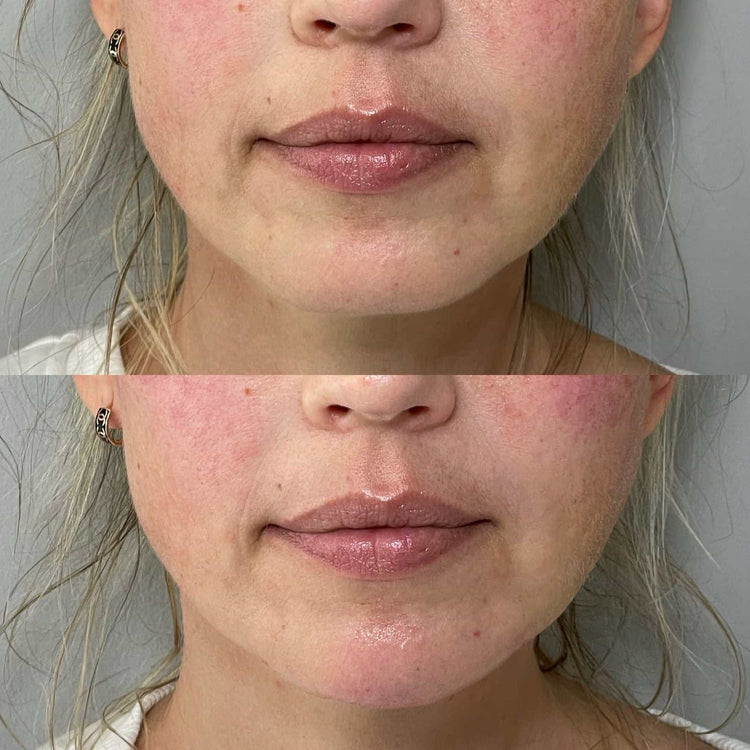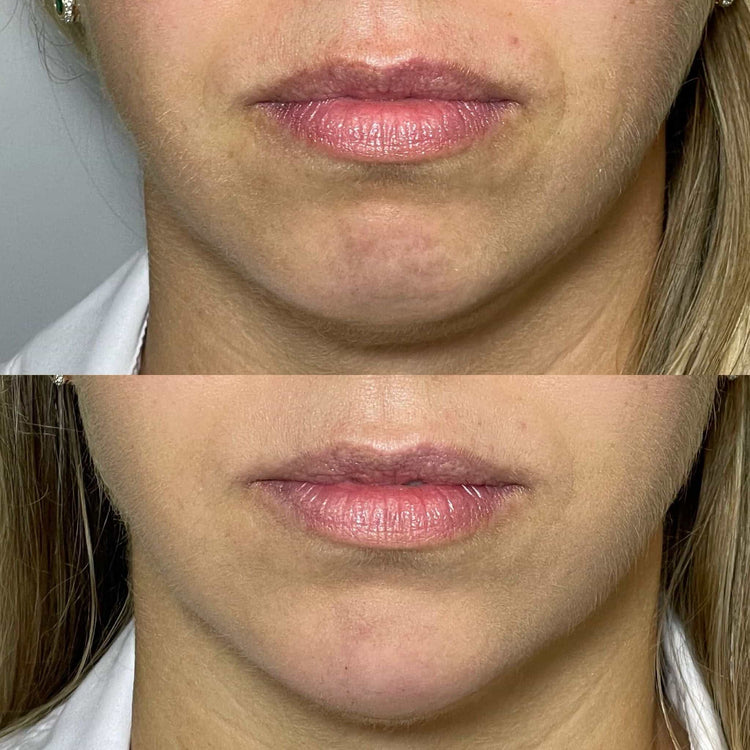Potential Complications
Labial and mental creases can be treated with fillers to enhance facial appearance, but potential complications should always be considered before undergoing this procedure.

Infection
While labiomental crease fillers can significantly improve the appearance of lines and wrinkles around the mouth, it’s important to be aware of potential complications.
- Infection is a possible risk with any injection procedure.
- Allergic reactions to filler materials can occur.
- Uneven distribution or lumps may develop if the filler is not injected correctly.
- Temporary swelling, bruising, and redness are common after treatment but should subside within a few days.
Bleeding
Bleeding is a potential complication of labiomental crease filler treatments.
- Bruising can occur as a result of the needle insertion.
- There is a risk of bleeding during or after the procedure, especially if the patient has a blood clotting disorder.
Allergic Reactions
Allergic reactions to filler materials are possible. Symptoms may range from mild (redness, itching) to severe (anaphylaxis). It’s crucial to discuss your medical history and any allergies with your injector beforehand.
Lumps and Nodules
Lumps and nodules can form if the filler is not injected properly or if the body reacts to the filler material. These irregularities may require further treatment to dissolve or disperse the filler.
In rare cases, permanent damage to tissues or blood vessels can occur. This risk is generally low but highlights the importance of choosing a qualified and experienced injector.
Aesthetic Concerns
While labiomental crease fillers can offer significant aesthetic improvements, it is crucial to be aware of the potential risks associated with this procedure.
Asymmetry
Labial and mental creases can be treated with fillers to enhance facial appearance, but potential complications should always be considered before undergoing this procedure.
While labiomental crease fillers can significantly improve the appearance of lines and wrinkles around the mouth, it’s important to be aware of potential complications.
- Infection is a possible risk with any injection procedure.
- Allergic reactions to filler materials can occur.
- Uneven distribution or lumps may develop if the filler is not injected correctly.
- Temporary swelling, bruising, and redness are common after treatment but should subside within a few days.
Bleeding is a potential complication of labiomental crease filler treatments.
- Bruising can occur as a result of the needle insertion.
- There is a risk of bleeding during or after the procedure, especially if the patient has a blood clotting disorder.
Allergic reactions to filler materials are possible. Symptoms may range from mild (redness, itching) to severe (anaphylaxis). It’s crucial to discuss your medical history and any allergies with your injector beforehand.
Lumps and nodules can form if the filler is not injected properly or if the body reacts to the filler material. These irregularities may require further treatment to dissolve or disperse the filler.
In rare cases, permanent damage to tissues or blood vessels can occur. This risk is generally low but highlights the importance of choosing a qualified and experienced injector.

While labiomental crease fillers can offer significant aesthetic improvements, it is crucial to be aware of the potential risks associated with this procedure.
Uneven Contour
Uneven contour is a potential risk of labiomental crease filler treatments. This occurs when the filler is not evenly distributed during injection. The result can be an asymmetrical appearance or the creation of lumps or bumps.
Several factors can contribute to uneven contour, including the injector’s skill and experience, the type of filler used, and the patient’s individual anatomy. Proper consultation and communication with the injector are crucial to minimizing this risk.
If uneven contour does occur, there are options for correction. Dissolving the excess filler or injecting additional filler in areas that need more volume can help restore symmetry.
Overfilled Appearance
Labiomental crease fillers offer a way to smooth wrinkles and enhance facial appearance, but it’s important to understand potential aesthetic risks.
Uneven contour is a common concern.
- This can happen if the filler isn’t distributed evenly during injection.
- The result might be asymmetry, lumps, or bumps.
Several things can contribute to uneven contour, including the injector’s skill, the type of filler used, and a person’s unique facial anatomy. Good communication with your injector before treatment is essential to minimizing this risk.
If uneven contour does occur, it may be corrected by dissolving excess filler or injecting more filler where needed to balance the look.
Long-Term Risks
While labiomental crease fillers can offer a way to smooth wrinkles and enhance facial appearance, it’s important to understand potential aesthetic risks.
Migration of Filler
Long-term risks associated with labiomental crease filler treatments are relatively rare but should be considered.
Migration of filler material is one such risk. Over time, the filler can move from its intended location, potentially leading to an unnatural or uneven appearance.
This migration can occur due to factors like facial movements, muscle contractions, and the body’s natural metabolism.
Regular follow-up appointments with a qualified injector are essential to monitor the placement of the filler and address any signs of migration early on.
Scarring
Long-term risks associated with labiomental crease filler treatments are relatively rare but should be considered.
Migration of filler material is one such risk. Over time, the filler can move from its intended location, potentially leading to an unnatural or uneven appearance.
This migration can occur due to factors like facial movements, muscle contractions, and the body’s natural metabolism.
Regular follow-up appointments with a qualified injector are essential to monitor the placement of the filler and address any signs of migration early on.
Another long-term risk is the possibility of scarring. While temporary swelling and bruising are common after treatment, in rare cases, persistent or excessive inflammation can lead to scar tissue formation around the treated area.
This can alter the appearance of the lips and surrounding skin.
Vascular Occlusion (Tissue Damage) **
Long-term risks associated with labiomental crease filler treatments are relatively rare but should be considered.
One such risk is vascular occlusion, which occurs when a blood vessel becomes blocked by filler material. This can lead to tissue damage, necrosis (tissue death), and in severe cases, permanent disfigurement.
Vascular occlusion is more likely to occur if the filler is injected too deeply or if it comes into contact with a blood vessel during injection.
Book a Chin Crease Treatment with Dr. Laura Geige at It’s Me & You Clinic for a refined profile
- Cuffing Season Explained: Why Relationships Heat Up In The Winter - June 29, 2025
- Your Ultimate Guide To Kratom Beverages In 2025 - June 28, 2025
- When Cheek Fillers Go Wrong? - June 26, 2025
